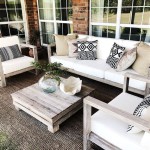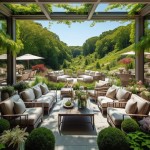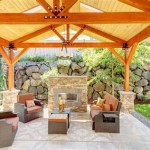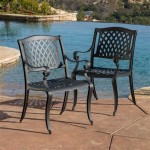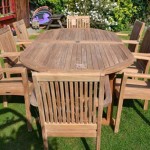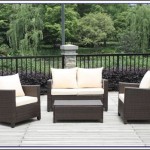Transforming Outdoor Spaces: Patio and Deck Ideas for Enhanced Living
Outdoor living spaces have become integral to modern homes, offering a seamless transition between indoor comfort and the natural environment. A well-designed patio or deck serves as an extension of the home, providing areas for relaxation, entertainment, and dining. Careful planning and selection of appropriate materials, design elements, and amenities are crucial to creating an outdoor space that enhances both the aesthetic appeal and functionality of the property.
The increasing popularity of outdoor living has led to a diverse range of patio and deck design options. Homeowners can customize their spaces to reflect their personal style and specific needs. Considerations such as the size and shape of the available area, the architectural style of the home, local climate conditions, and budget constraints all play a significant role in the planning process. A successful outdoor space is one that complements the existing landscape and seamlessly integrates with the home's interior.
Before embarking on a patio or deck project, it is crucial to assess the available space and its potential. Consider factors such as sun exposure, wind patterns, and privacy. Understanding these elements will help inform decisions regarding shading options, windbreaks, and screening solutions. A thorough site analysis will also reveal any potential challenges, such as uneven terrain or drainage issues, that need to be addressed during the design and construction phases.
Material selection is a critical aspect of patio and deck design. The choice of materials will significantly impact the appearance, durability, and maintenance requirements of the outdoor space. Common materials include wood, composite decking, concrete, stone, brick, and tile. Each material offers unique advantages and disadvantages in terms of cost, aesthetics, and resistance to the elements. Careful consideration should be given to the local climate and the intended use of the space when selecting materials.
Choosing the Right Decking Material: Balancing Aesthetics and Performance
Wood remains a popular choice for decking due to its natural beauty and warmth. However, wood decks require regular maintenance, including staining or sealing, to protect against moisture damage and insect infestation. Pressure-treated lumber is a common option for its resistance to decay, but it may require ongoing treatment to maintain its appearance and structural integrity. Hardwood options, such as redwood, cedar, and ipe, offer greater durability and aesthetic appeal but come at a higher cost.
Composite decking has emerged as a low-maintenance alternative to wood. These materials are typically made from a combination of recycled plastic and wood fibers, offering excellent resistance to moisture, fading, and insect damage. Composite decking requires minimal maintenance, such as occasional cleaning, and is available in a wide range of colors and textures. While the initial cost of composite decking may be higher than wood, its long-term durability and reduced maintenance requirements can make it a cost-effective choice.
Concrete is a versatile material that can be used for patios and walkways. It can be poured in various shapes and sizes and can be stained or stamped to create a wide range of aesthetic effects. Concrete is durable and requires minimal maintenance, but it can be prone to cracking in areas with extreme temperature fluctuations. Proper drainage and expansion joints are essential to prevent cracking and ensure the longevity of a concrete patio.
Stone and brick are natural materials that offer a timeless and elegant look. They are durable and require minimal maintenance, but they can be more expensive than other options. Stone and brick are available in a variety of colors, textures, and patterns, allowing for customized designs. Proper installation is crucial to ensure a level and stable surface. Grouting and sealing can help protect against moisture and prevent weeds from growing between the stones or bricks.
Tile is another popular choice for patios, offering a wide range of colors, patterns, and textures. Tile is durable and easy to clean, but it can be slippery when wet. It is important to choose tiles that are specifically designed for outdoor use and are resistant to frost damage. Proper installation and grouting are essential to prevent moisture from penetrating the tile surface and causing damage.
Incorporating Design Elements for Enhanced Functionality and Aesthetics
Once the materials have been selected, the next step is to consider the design elements that will enhance the functionality and aesthetics of the outdoor space. This includes factors such as layout, furniture, lighting, landscaping, and accessories. A well-designed patio or deck will create a comfortable and inviting atmosphere for relaxation, entertainment, and dining.
The layout of the outdoor space should be carefully considered to maximize its usability. Consider the flow of traffic between different areas, such as the kitchen, dining area, and seating area. Create defined zones for specific activities, such as cooking, dining, and lounging. Incorporate pathways and walkways to provide easy access to different parts of the yard. Consider the placement of furniture and accessories to create a comfortable and functional space.
Furniture is an essential element of any outdoor living space. Choose furniture that is durable, weather-resistant, and comfortable. Consider the style of the furniture and how it complements the overall design of the space. Outdoor furniture is available in a wide range of materials, including wood, metal, wicker, and plastic. Choose materials that are appropriate for the local climate and the intended use of the furniture. Consider adding cushions and pillows for added comfort.
Lighting is crucial for creating a welcoming and functional outdoor space, especially during the evening hours. Consider incorporating a variety of lighting options, such as ambient lighting, task lighting, and accent lighting. Ambient lighting provides general illumination for the space, while task lighting provides focused light for specific activities, such as cooking or reading. Accent lighting highlights specific features, such as plants or architectural details. Consider using energy-efficient LED lights for reduced energy consumption and long-lasting performance.
Landscaping plays a vital role in creating a beautiful and inviting outdoor space. Consider incorporating a variety of plants, trees, and shrubs to add color, texture, and visual interest. Choose plants that are appropriate for the local climate and soil conditions. Consider adding potted plants and hanging baskets for pops of color and texture. Incorporate features such as water features, rock gardens, or fire pits to create a focal point in the space.
Accessories can add personality and style to an outdoor space. Consider adding items such as outdoor rugs, throw pillows, lanterns, and artwork. These accessories can help to create a comfortable and inviting atmosphere. Choose accessories that are durable and weather-resistant. Consider the colors and patterns of the accessories and how they complement the overall design of the space.
Enhancing Privacy and Comfort: Shading, Windbreaks, and Screening Solutions
Privacy and comfort are essential considerations for any outdoor living space. Depending on the location and orientation of the patio or deck, it may be necessary to incorporate shading solutions, windbreaks, and screening solutions to create a more private and comfortable environment. These elements can help to block unwanted views, reduce noise, and protect against the elements.
Shading solutions are essential for protecting against the sun's harmful rays and creating a more comfortable outdoor space, especially during the summer months. Consider incorporating options such as awnings, pergolas, umbrellas, and shade sails. Awnings provide shade over a specific area and can be retractable for flexibility. Pergolas are open structures that can be covered with vines or fabric for added shade. Umbrellas are portable and can be easily moved to provide shade where needed. Shade sails are large fabric panels that are suspended between posts or structures to provide shade over a larger area.
Windbreaks are essential for protecting against strong winds and creating a more comfortable outdoor space. Consider incorporating options such as hedges, fences, or screens. Hedges can create a natural windbreak while adding privacy and beauty. Fences can provide a more solid windbreak and can be customized to complement the design of the space. Screens can be used to create a temporary windbreak or to divide different areas of the space.
Screening solutions are essential for creating privacy and blocking unwanted views. Consider incorporating options such as fences, hedges, screens, or curtains. Fences and hedges can provide a solid barrier against unwanted views. Screens can be used to create a more decorative and temporary screening solution. Curtains can be hung from pergolas or other structures to provide privacy and block sunlight.
By carefully considering these design elements and incorporating appropriate materials and amenities, homeowners can create outdoor spaces that are both functional and aesthetically pleasing. A well-designed patio or deck can enhance the value of the home and provide a relaxing and enjoyable environment for years to come. The key is to approach the project with careful planning and attention to detail, ensuring that the final result meets the specific needs and lifestyle of the homeowner.

Outdoor Deck And Patio Ideas Aspen Designs

Unveiling 61 Stylish Patio Privacy Ideas For Your Relaxation Backyard Decks Deck Designs

Deck Ideas 40 Ways To Design A Great Backyard Or Patio Sunset

50 Deck Design Ideas To Express Your Style Outdoors

21 Small Deck Ideas To Elevate Your Outdoor Space Timbertech

34 Comfy Backyard Patio Deck Designs Ideas For Relaxing Design

Covered Deck Ideas For A Perfect Indoor Outdoor Experience

Backyard Patio Ideas And Inspiration For 2024 Decks Com

50 Deck Design Ideas To Express Your Style Outdoors

14 Backyard Deck Ideas To Upgrade Your Outdoor Space
See Also

